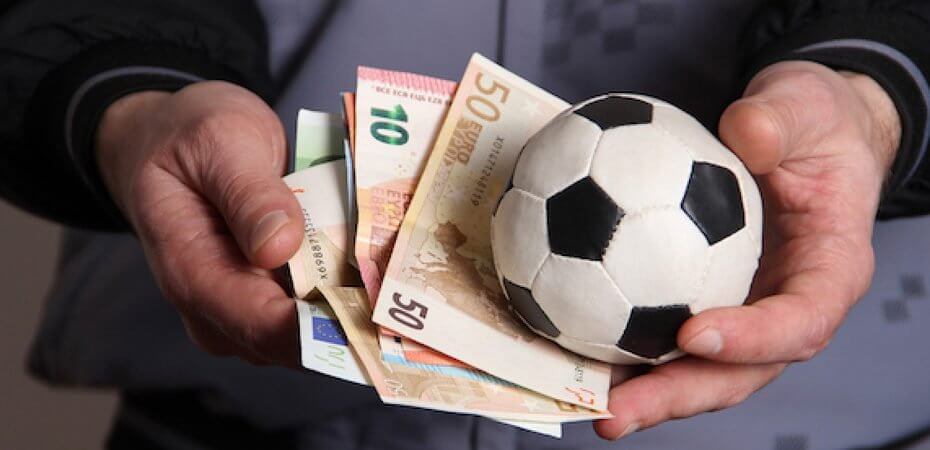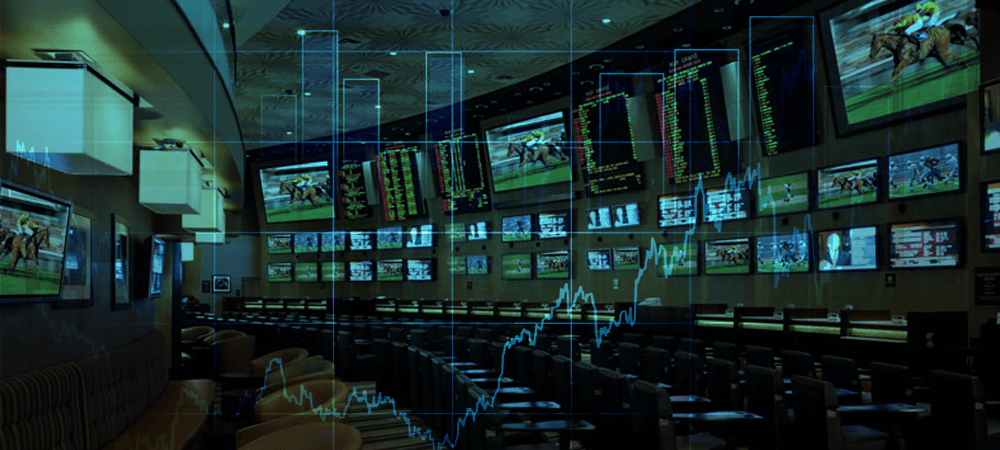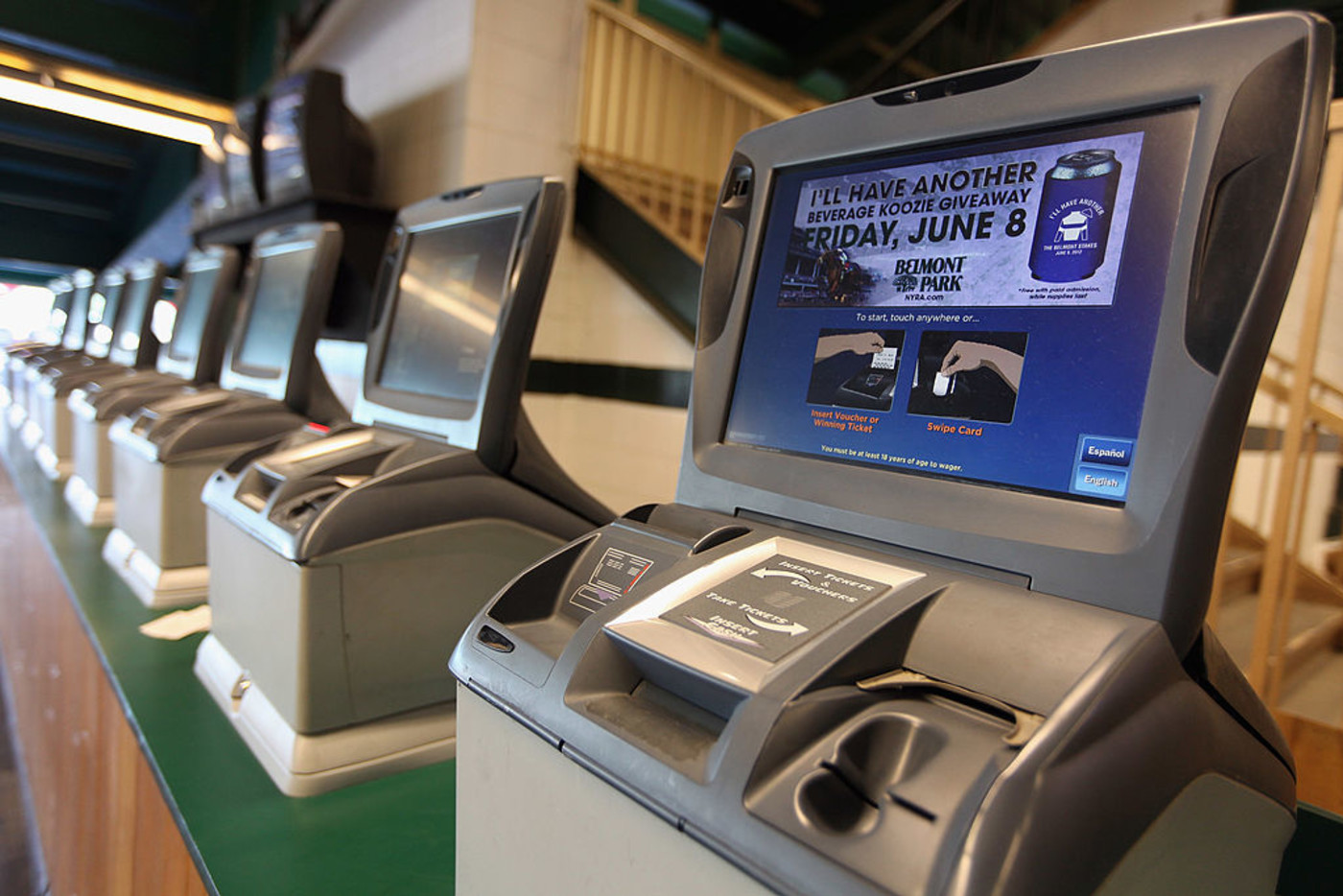How Do Sportsbooks Make Money

Last month we held a little clinic on Sports Book betting and let you behind the curtain on some sports wagering slang terms. After all, you need to talk the talk before you can walk the walk. This month we are continuing our education in letting you know how Sports Books work. Again, if you know why sports books do the things they do, you may have a better experience while playing.
The vig, or the vigorish, is the number one answer to the question, “Do sportsbooks make money?” Also known as the “juice,” this is the fee that a sportsbook charges for taking wagers from bettors. A lot of people believe that sports betting sites only depend on the unexpected outcome of matchesto make a profit e.g. A team in position 1 losing to the last team on the table. A team in position 1 losing. Here we cover a commonly asked question we get: 'How do bookmakers make money?' Our team of experts has put this video together to best explain this in an ea.
Right off the bat, let’s be perfectly clear. Sports books make money on every straight bet they take action on. It’s a foregone conclusion. Let me explain.

Sports Books charge vigorish also known as “the vig” or “juice”. Juice is the amount charged by a sportsbook for their services. By taking on the risk of handling all bets, the book takes a percentage, typically 10%. Why else would they take the risk of covering all bets? Bookmakers use this concept to make money on their wagers regardless of the outcome. Because of the vigorish concept, bookmakers should not have an interest in either side winning in a given sporting event.

Piggybacking that same concept, sports books set the line at a certain number that will encourage betting action on both teams. No matter what NCAA Football Predictions you may hear on the radio or read online, the point spread is there to encourage the exact same amount of money is wagered on both teams.
Please keep in mind that sports books have no rooting interest in any game on the boards. They just want equal action on both sides. Because most sports books keep 10% juice, when you win a bet, you are only paid about 190% of your bet. If you bet $100 on the Ravens this past weekend and another person bet $100 on the Steelers, the sports book would be happy. Because the Ravens won, the sports book would take the $100 lost by the Steelers bettor and apply it to your winnings. You would get your original wager of $100 plus a portion of the money the Steelers bettor lost. You would cash a ticket worth $190 and the sports book keeps the remaining $10 as their commission for taking the betting action and risks.
You may sometimes see a point spread move up or down from the day the opening line was announced to game time. A line moving up or down simply indicates one team has received an inordinate amount of money placed on it. Because the sports book wants to encourage equal betting on both teams, they will then move the line a point or two in the favor of the other team that has been under bet. By giving more points to the other team makes them more attractive to sports wagerers and thus encourage more money to come in on the other side.

When a sports book announces the opening point spreads, they are not based what the actual professional handicapper thinks will be the final score differential. The opening line is the handicapper’s guess as to what he believes the general public will perceive the final score to be. Under performing teams that are popular nationwide, Notre Dame is a prime example, will typically get smaller opening odds because handicappers know people will bet with their heart. Many fans will lay down a wager on their favorite team just because they want to support their team not only in their heart but at the betting window. Teams with large fan followings that are loyal to a fault are hard to handicap because the lines maybe skewed to encourage others to bet on the opposition and to balance out all the rabid fans.
Now that you know the inner working of how a sports book can afford to pay out all those huge winners, you can be a better informed and knowledgeable wagerer. Next month’s installment of Sports Book 101 will involve smart sports wagering and how to wager responsibly using a tight bankroll.
Sports Insights is a leader in providing innovative sports information and betting systems to help its members navigate the sports marketplace. Sports Insights’ founder, Dan Fabrizio, recently came out with a book titled “Sports Investing: Profiting from Point Spreads“, solidifying our position as a leader in the field of sports gambling analysis. Sports Insights focuses on systematic and measurable approaches to capturing value in the sports marketplace. One of the key elements to our approach is our proprietary Betting Percentages, collected from several major online sportsbooks.
How does a business, and more specifically a sportsbook, view profit and revenue? How do they manage risk? How are sportsbook profit margins managed for greatest gain? How can “Betting Percentages” help? At Sports Insights, we often use phrases like “betting percentages” and “smart money.” With this article, the first of a series, SportsInsights will be studying the workings of the sports investing marketplace. In this article, we take a step back and look at what an actual risk manager at a sportsbook might feel. We’ll look at how sportsbooks make lines for games, study how they might shade lines to increase profit margins, and see how public “betting percentages” can help identify value.
In future articles within this series, we’ll take a closer look at why “smart money” and “reverse line movement” are telling indicators — and how they work on a more fundamental level. These articles can help us get a better understanding of why “contrarian investing” works — and how sportsbooks operate. The information on this site is for entertainment and educational purposes only. Use of this information in violation of any federal, state, or local laws is prohibited.
Sportsbooks and Balancing Risk
For point-spread sports, the odds are generally around -105 or -110. For instance, you might be able to bet on the favorite in the NFL such as the New Orleans Saints at -10 at -110 odds, or the favorite in an NBA game such as the Boston Celtics -3 at -105 odds. If you wanted the other side of the bet, you could normally take the underdog for the same point-spread (+10 and +3, respectively), and “receive” the points, instead of “giving” the points. The odds are typically close to even odds, such as -105 or -110 (which means risking $105, or $110, to win $100). Point-spreads — and moneyline odds — are designed to help sportsbooks balance the risk they have on either side of a bet.
Sportsbook Payouts and the 50%/50% Betting Percentage or “Balanced Book”
In this example, a casino or sportsbook has taken in 100 bets of $110 each ($110 to win $100), or a total of $11,000. Fifty percent (50%) of the bets (or 50 bets of $110 each, totaling $5,500) are on the favorite and 50% of the bets are on the underdog.
- The sportsbook knows that if the Favorite wins, they have to pay out $10,500 to the appropriate bettors ($5,500 bet plus $5,000 winnings).
- Similarly, if the Underdog wins, the sportsbook also has to pay out $10,500 — to the appropriate bettors.
- The sportsbook is happy because either way, they have profited — since they collected $11,000 in total and need to pay out just $10,500.
This is fairly ideal for the sportsbook’s risk manager. The bets are evenly balanced so the sportsbook collects the vig with no risk. The sportsbook will collect $500 on $11,000 worth of action, for a profit margin of 4.5%. The sportsbook has a nicely balanced book of business.
Sportsbook Payouts and the “Centered Game”
In addition to trying to balance bettors on either side of a bet, sportsbooks seek to price the odds of each bet so that each sporting event is close to a “centered game,” or a bet whose pricing reflects the actual expected probability of that event to occur. If the bets are priced with the true exact probabilities, bettors will only be able to win 50% of their point-spread bets (and appropriate moneyline winning percentage) — and the sportsbooks will collect the 4.5% profit margin in the long run due to the cushion of the vig. In this example, the actual bets that a sportsbook takes won’t matter in the long-run (because by definition, the proper pricing will prevent bettors from making outsized gains).
Human Nature, Profit Margins, and Shaded Lines
In the examples above, we show perfect scenarios for the sportsbooks. In real-life, it is difficult for the sportsbooks to perfectly balance the risk on every single bet they take. In addition, it is impossible to know the precise odds of any sporting event to perfectly “center the odds.”
However, there is one sure thing that rings true: human nature. Bettors have certain tendencies. For instance, on average, bettors like to take favorites. Sports fans also like “jumping on the bandwagon” and riding the coattails of perennial winners. Sportsbooks can use these biases to shade their lines and increase their profit margins.
We estimated a sportsbook’s expected profit margin based on results over a wide range of events (small favorites, heavy favorites, etc.). We analyzed the expected profit margin when shading a team’s expected probability for covering the spread by 1%, 2%, and 3%. Note how the left column, “Public % on Overpriced Side,” affects the overall profits, when shaded by the different percentages. For the purposes of this table, we assumed all bets are the same size.
Table 1: Expected Profit Margin for Shaded Lines based on Betting Percentages
| Public % on Overpriced Side | Profit Margin (Probability Shaded 1%) | Profit Margin (Probability Shaded 2%) | Profit Margin (Probability Shaded 3%) |
| 100% | 6.3% | 8.2% | 10.2% |
| 80% | 5.6% | 6.7% | 8.0% |
| 60% | 4.9% | 5.3% | 5.7% |
| 50% | 4.5% | 4.5% | 4.5% |
| 40% | 4.2% | 3.8% | 3.4% |
| 20% | 3.5% | 2.3% | 1.2% |
| 0% | 2.8% | 0.9% | -1.1% |
What do the Results Mean?
As you can see in Table 1, above, there is a strong incentive for sportsbooks to shade lines, based on their experience with bettors and human nature. For example, we know that many bettors prefer to bet on favorites. Based on our analysis, if 60-80% of bets are taking the favorite, sportsbooks can improve their profit margins from 4.5% to about 6% by shading their lines 2%! Most games do not get out of whack in terms of public “betting percentages” to 0%/100% — especially in the opposite direction that sportsbooks expect, so there is virtually no risk for the sportsbooks to shade their lines.
And How Can Betting Percentages Help?
Based on research for this article, we can see that when the public “betting percentages” get to extremes, it identifies games that sportsbooks have potentially shaded. For example, the Lakers might be favored by -12 points instead of the -10 that the “centered numbers” dictate. The sportsbooks know that the betting public will lean to the popular teams and heavy favorites. They will make the “Joe Public” “pay more” to take the heavy favorites.
How Do Sportsbooks Make Money Reddit

In the most lopsided-bet games, as determined by “betting percentages,” you want to “Bet Against the Public” and take the same side as the long-term winners: the sportsbooks. Betting against the public has proven to be a good contrarian investment for those who seek value in the sports marketplace.
How Much Money Do Sportsbooks Make
Disclaimer
How To Read Betting Odds
We do not guarantee that the trends and biases we’ve found will continue to exist. It is impossible to predict the future. Any serious academic research in the field of “market efficiencies” recognizes that inefficiencies may disappear over time. Once inefficiencies are discovered, it is only a matter of time before the market corrects itself. We do not guarantee our data is error-free. However, we’ve tried our best to make sure every score and percentage is correct.